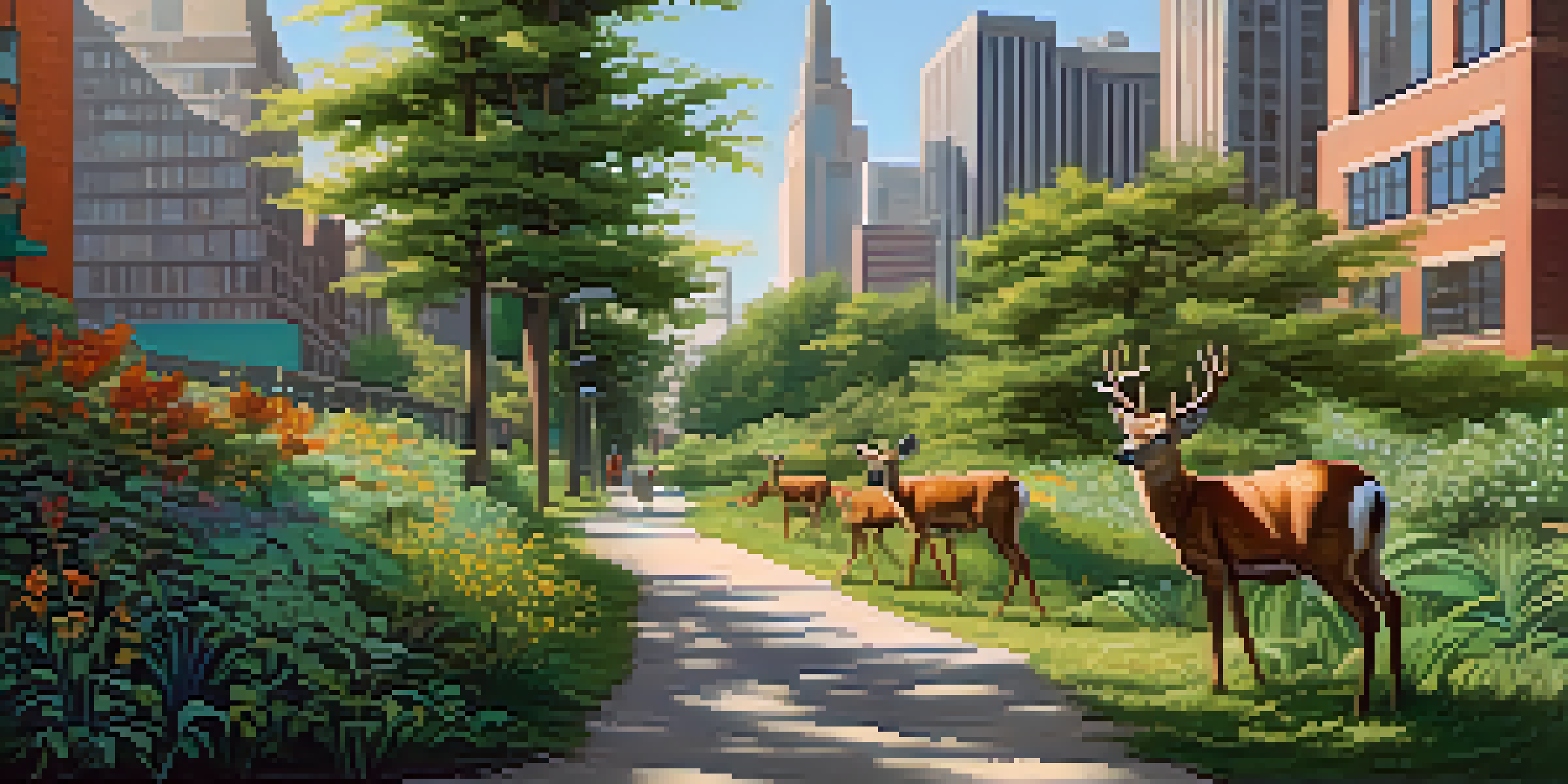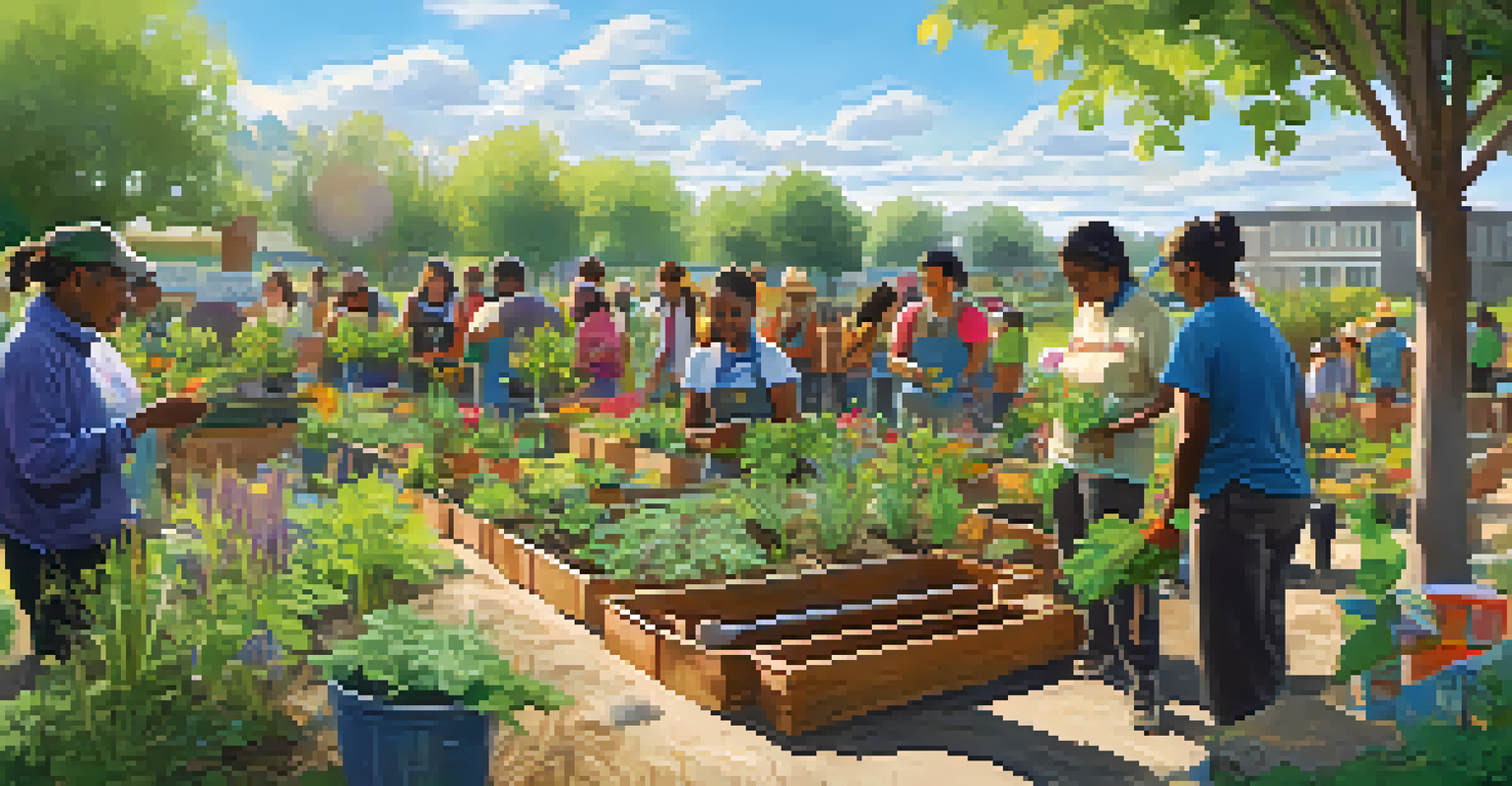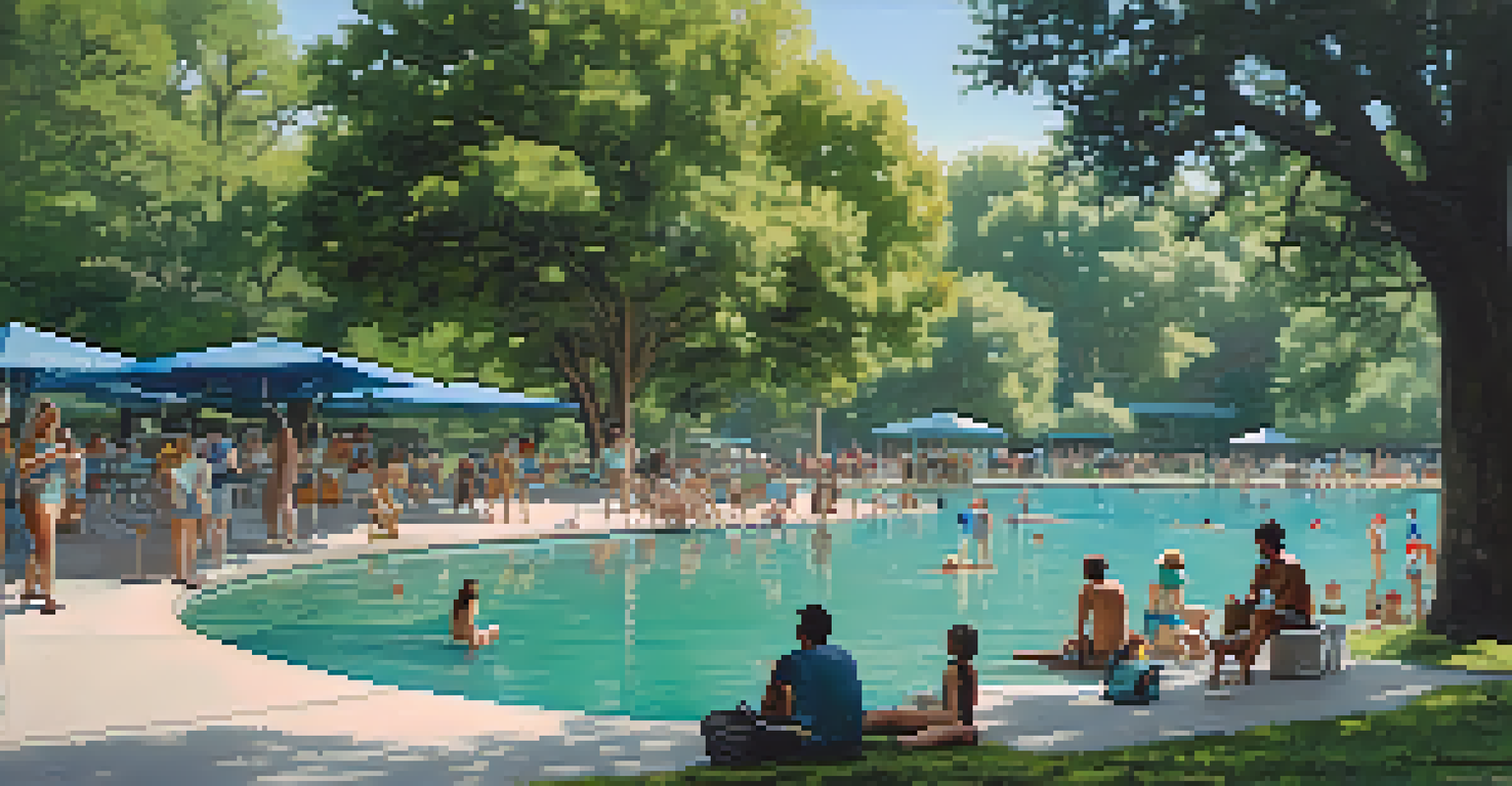Austin's Wildlife Corridors: Protecting Animal Habitats

Understanding Wildlife Corridors and Their Importance
Wildlife corridors are essential pathways that connect fragmented habitats, allowing animals to move freely between them. In urban areas like Austin, these corridors play a crucial role in maintaining biodiversity and ensuring the survival of various species. Without these interconnected spaces, animals can face isolation, leading to decreased genetic diversity and increased vulnerability.
The future will either be green or not at all.
Think of wildlife corridors as highways for animals, where they can safely traverse their environment without the threat of vehicles or human interference. This is particularly important in a rapidly growing city like Austin, where development can encroach on natural habitats. These corridors not only facilitate animal movement but also help sustain the local ecosystem, allowing plants and wildlife to thrive.
By creating and preserving these corridors, we are not just protecting wildlife; we are fostering a healthier environment for everyone. Healthy ecosystems contribute to clean air, water, and even recreational spaces for residents. Ultimately, wildlife corridors are vital for the balance between urban growth and nature conservation.
Austin's Unique Ecosystem and Its Challenges
Austin is home to a diverse range of wildlife, from the iconic Mexican free-tailed bats to numerous bird species and native plants. However, urban development poses significant challenges to these natural habitats, fragmenting them and making it difficult for wildlife to thrive. The pressure of a growing population and infrastructure can lead to a loss of biodiversity, which is concerning for both wildlife and residents.

Imagine a once-thriving forest that has been divided by roads and buildings; this is the reality for many species in Austin. As they lose their natural homes, animals struggle to find food, mates, and shelter. It’s a ripple effect that impacts the entire ecosystem, highlighting the urgent need for wildlife corridors to maintain connectivity among habitats.
Wildlife Corridors Enhance Biodiversity
These corridors connect fragmented habitats, allowing animals to move freely and maintain genetic diversity.
Addressing these challenges requires a collective effort from city planners, environmental organizations, and the community. By recognizing the value of Austin's unique ecosystem, we can work together to implement solutions that protect these vital habitats for future generations.
Key Wildlife Corridors in Austin
Austin has several designated wildlife corridors that help link critical habitats throughout the city. Notable examples include the Barton Springs Pool area and the Balcones Canyonlands Preserve, which serve as essential refuges for various species. These corridors not only support wildlife but also enhance the urban landscape by providing green spaces for residents to enjoy.
In nature's economy, the currency is not money, it is life.
Think of these wildlife corridors as lifelines; they enable animals to navigate their environment while also enriching the community’s quality of life. Parks, greenbelts, and natural areas within the city act as vital connectors, allowing wildlife to migrate safely and access resources. In this way, everyone benefits from the presence of these corridors.
Moreover, these corridors help to educate the public about the importance of wildlife conservation. By visiting these areas, residents can learn about local flora and fauna and understand the significance of protecting their natural surroundings. This knowledge fosters a sense of stewardship that is essential for preserving Austin's wildlife.
Community Involvement in Wildlife Corridor Initiatives
Community involvement is crucial for the success of wildlife corridor initiatives in Austin. Local residents can participate in various activities to support these efforts, such as volunteering for habitat restoration projects or advocating for conservation policies. Engaging the community ensures that wildlife corridors are not only created but also maintained for future generations.
Consider the impact of a neighborhood coming together to plant native vegetation along a corridor; this not only provides food and shelter for wildlife but also beautifies the area. Community gardens and park cleanups are great ways for residents to contribute positively to their environment. When people invest in their local ecosystem, the benefits extend far beyond wildlife conservation.
Community Involvement is Crucial
Engaging local residents in conservation efforts fosters stewardship and ensures the maintenance of wildlife corridors.
Additionally, raising awareness about the challenges faced by local wildlife can inspire others to take action. Workshops, educational programs, and social media campaigns can help spread the message about the importance of preserving wildlife corridors. Working together, communities can create a powerful movement that champions both animal habitats and urban sustainability.
The Role of Technology in Wildlife Corridor Conservation
Technology has become an invaluable tool in the conservation of wildlife corridors. From GPS tracking to camera traps, modern innovations allow researchers to monitor animal movements and behavior. This data helps in understanding how wildlife interacts with their environment and the effectiveness of existing corridors.
Imagine using a smartphone app that tracks local wildlife sightings; this not only engages the community but also provides critical information for conservation efforts. By gathering real-time data, conservationists can adjust strategies and design more effective wildlife corridors. Technology thus enhances our ability to protect and preserve these vital habitats.
Moreover, advancements in mapping technology help identify areas that need protection or restoration. Geographic Information Systems (GIS) can analyze land use patterns and assess the health of ecosystems. By leveraging these tools, Austin can make informed decisions that prioritize wildlife corridors and ensure a sustainable future for both nature and its residents.
Policy and Legislation Supporting Wildlife Corridors
Effective policy and legislation are essential for the protection of wildlife corridors in Austin. Local government plays a crucial role in creating regulations that prioritize conservation efforts and sustainable development. By implementing zoning laws that protect natural areas, city planners can ensure that wildlife corridors remain intact amidst urban growth.
Consider the impact of policies that require developers to include green spaces in their projects; this approach not only protects wildlife but also enhances the livability of neighborhoods. Strong legislation can also provide funding for habitat restoration and corridor creation, ensuring that these initiatives receive the necessary support. Collaboration between government, non-profits, and community members is key to successful conservation efforts.
Technology Aids Conservation Efforts
Innovations like GPS tracking and GIS mapping enhance our understanding of wildlife movements and help design effective corridors.
As Austin continues to grow, it’s vital that policies evolve to address the emerging challenges faced by wildlife. Advocating for better regulations and raising awareness about the importance of wildlife corridors can lead to meaningful change. By prioritizing conservation in policy discussions, we can work towards a more sustainable future for both wildlife and the city.
The Future of Wildlife Corridors in Austin
The future of wildlife corridors in Austin holds great promise, but it requires ongoing commitment from all stakeholders. As awareness grows and community involvement increases, there is potential for creating a robust network of wildlife corridors that supports diverse ecosystems. This vision can become a reality through collaboration, education, and innovative solutions.
By integrating wildlife corridors into the city’s planning processes, Austin can lead the way in urban conservation. Future projects might include expanding existing corridors, creating new ones, and restoring degraded habitats to enhance connectivity. This proactive approach can help mitigate the impacts of urbanization on local wildlife, ensuring their survival.

Ultimately, the success of wildlife corridors will depend on a collective effort to prioritize nature within urban settings. As residents, organizations, and government work together, we can create a vibrant city that accommodates both wildlife and human needs. A thriving ecosystem is not just beneficial for animals; it enriches the entire community, making Austin a better place to live for everyone.